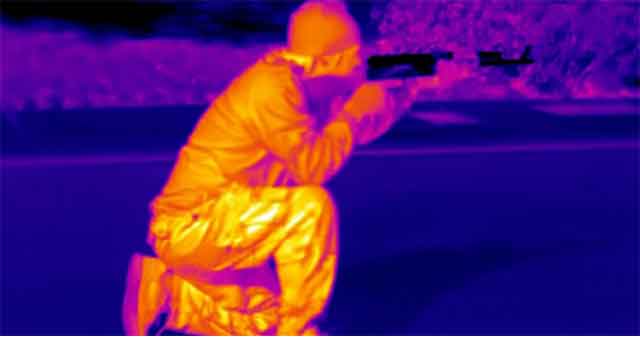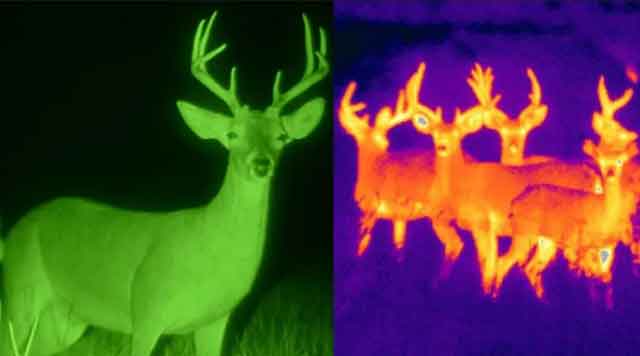18792456795
Email: mh_elec@126.com or jacky@mh-elec.com
Let's start with some background. What our eyes can see is reflected light. So daylight cameras, night vision devices, and the human eye all work on the same basic principle: Visible light energy hits an object and bounces off, and a detector picks it up and turns it into an image.
Whether it's an eyeball or a camera, these detectors must receive enough light or they can't image. However, at night there is no sunlight to reflect, so they can only rely on starlight, moonlight and artificial light. If there isn't enough light, they won't help much with your findings.
However, night vision infrared thermal imaging camera is an infrared technology that realizes observation by means of infrared radiation emitted by the target itself. The detector itself does not emit any energy, but only passively receives, detects and images infrared radiation from the target, and forms an observable image based on the temperature difference or thermal radiation difference between the target and the background or parts of the target.

1. The Working Principle of Thermal Imaging Night Vision: Infrared technology that realizes observation by means of infrared radiation emitted by the target itself, which forms an observable image according to the temperature difference or thermal radiation difference between the target and the background or various parts of the target.
2. The Structure of The Thermal Imaging:
2.1. Optical System: The function is to filter out the infrared rays of the band that the detector does not need. The infrared heat of the desired band is focused on the detector to collect infrared heat distribution signals. The observation distance is mainly related to the lens.
2.2. Thermal Sensor: Convert the infrared heat signal collected by the lens into an image. Passive infrared night vision technology is an infrared technology that realizes observation by means of infrared radiation emitted by the target itself. It finds the target according to the temperature difference or thermal radiation difference between the target and the background or various parts of the target. The accuracy of the detector affects the imaging effect.
3. The Differences Between Thermal Imager and Night Vision:
Before explaining the difference between thermal imagers and night vision cameras, I want to briefly talk about the imaging principles of the two.
Thermal imager uses an infrared detector and an optical imaging objective lens to receive the infrared radiation energy distribution pattern of the measured target and reflect it on the photosensitive element of the infrared detector, thereby obtaining an infrared thermal image.
The night vision device collects the existing ambient light (starlight, moonlight or infrared light) through the objective lens, and the light composed of photons enters the photon cathode tube to convert the photons into electrons. The electrons are then amplified to larger numbers by electronic and chemical processes, and finally the electrons are projected onto a screen, creating a visible night vision image.
3.1. The Clearest Difference: The most obvious difference between thermal imager and night vision camera is that the thermal imager image is displayed as a square, and the night vision imager is displayed as a circle.

3.2. Different Imaging Effects: The image of the night vision device is circular, and the picture is green. With sufficient clarity, the features of the target can be seen clearly. The imaging of the thermal imager is square, which can be observed by the temperature emitted by the target. The main purpose is to find targets and identify target categories.
3.3. Influence of Light Factors Varies: The imaging of low-light night vision devices is easily affected by the environment, especially light. As the light dims, the observation distance decreases. It must be observed with the aid of an infrared auxiliary light source in a completely dark environment, and it can only be used at night. Infrared thermal imaging night vision devices are not affected by light, and can be used at the same time during the day or night, and can clearly observe the target object in extreme weather (such as rain, snow, and dense fog).
3.4. Summarize: Night vision devices can identify targets at night and identify the characteristics of targets. Thermal imagers can only be used to identify targets and distinguish real and fake targets from images. Thermal imagers can also use passive imaging in total darkness, not afraid of strong light, and can image through smoke. The night vision device requires active light source intervention to image, cannot penetrate smoke, and is afraid of strong light.
Night vision devices all have the same downside: they need enough light and enough contrast to create a usable image. But on the other hand, thermal imagers can clearly see day and night while creating their own contrast. Without a doubt, thermal cameras are the best choice for 24-hour imaging.
Contact Engineer manager
Engineer Manager Name: Jacky
WhatsApp/ Wechat: 0086-18792456795
Email: mh_elec@126.com or jacky@mh-elec.com
 tel
tel

